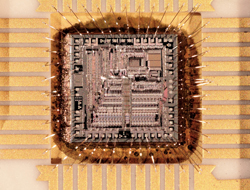Getting to grips with nano objects
Adding to challenges related to handling, another issue is that electrical charges make the movement of items on the nanoscale unpredictable. And to make things even more difficult, both of these factors depend on the observed item's environment. This means that even basic manipulation tasks (grasping and especially releasing) have proven problematic. The 'Nano robotic for assembly characterisation' (Nanorac) project set out to understand, model and reproduce the dynamic behaviour of incredibly small objects in their environment and develop devices for manipulating them. This EU-funded research successfully produced two tiny devices for gripping the even tinier components, which deal well with the constraints of working on such a small scale. Another goal was to create a system that would provide an untrained user with feedback in completing these tasks. The result here was a human-machine interface, sensitive to touch, which allows researchers to directly simulate situations to aid the operator's understanding. The project brought together previously developed technology to create arrays of uniform and evenly distributed carbon nanotubes for test purposes. Such a system allowing scientists and untrained users to tackle the difficulties of moving and identifying minute objects also makes the testing of helpful devices much easier.

